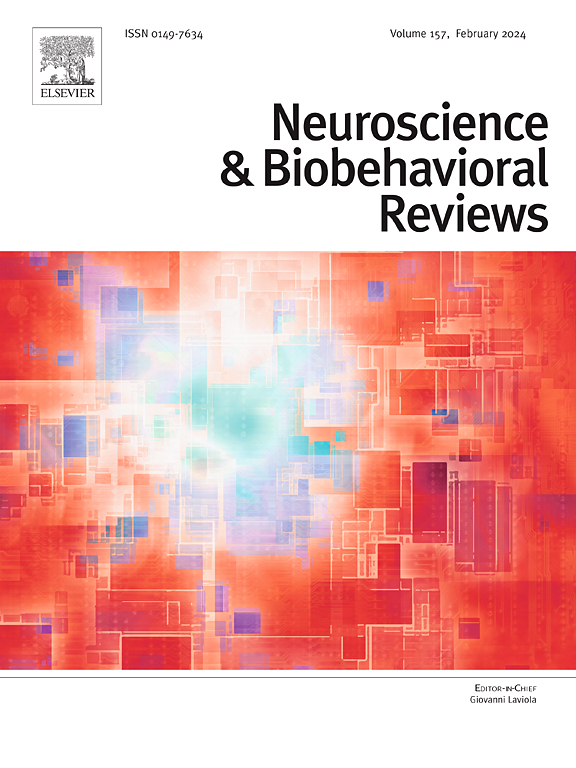The whole-brain structural and functional connectome in Alzheimer’s disease spectrum: A multimodal Bayesian meta-analysis of graph theoretical characteristics
IF 7.5
1区 医学
Q1 BEHAVIORAL SCIENCES
引用次数: 0
Abstract
Alzheimer’s disease (AD) spectrum is increasingly recognized as a progressive network-disconnection syndrome. Neuroimaging studies using graph theoretical analysis (GTA) have reported alterations in the topological properties of whole-brain structural and functional connectomes in both preclinical AD and AD patients, though findings remain inconsistent. This study aimed to identify robust changes in multimodal GTA metrics across the AD spectrum through a comprehensive literature search and Bayesian random-effects meta-analyses. The analysis included 53 studies (37 functional and 17 structural), involving 1649 AD patients, 1455 preclinical AD patients, and 1771 healthy controls (HC). Results revealed lower structural network integration (evidenced by higher characteristic path length and/or normalized characteristic path length) and segregation (evidenced by lower clustering coefficient and local efficiency) in AD and preclinical AD patients compared to HC. Functional network segregation was also lower in AD patients, while preclinical AD showed preserved functional topology despite structural changes. Moderator analyses identified potential methodological moderators, including neuroimaging technique, node and edge definitions, and network type, although further validation is needed. These findings support the progressive disconnection hypothesis in the AD spectrum and suggest that structural network alterations may precede functional network changes. Furthermore, the results help clarify inconsistencies in previous studies and highlight the utility of graph-based metrics as biomarkers for staging AD progression.
阿尔茨海默病谱系中的全脑结构和功能连接组:图理论特征的多模态贝叶斯元分析
阿尔茨海默病(AD)谱系越来越被认为是一种进行性网络断开综合征。使用图理论分析(GTA)的神经影像学研究报道了临床前AD和AD患者全脑结构和功能连接体的拓扑特性的改变,尽管结果仍然不一致。本研究旨在通过全面的文献检索和贝叶斯随机效应荟萃分析,确定跨AD谱的多模态GTA指标的稳健变化。该分析包括53项研究(37项功能性研究和17项结构性研究),涉及1649名AD患者、1455名临床前AD患者和1771名健康对照(HC)。结果显示,与HC相比,AD和临床前AD患者的结构网络整合(表现为更高的特征路径长度和/或标准化特征路径长度)和隔离(表现为更低的聚类系数和局部效率)较低。阿尔茨海默病患者的功能网络分离也较低,而临床前阿尔茨海默病患者的功能拓扑结构尽管发生了变化,但仍保持不变。调节因素分析确定了潜在的方法调节因素,包括神经成像技术、节点和边缘定义以及网络类型,尽管需要进一步验证。这些发现支持了AD谱系中的渐进式断开假说,并表明结构网络的改变可能先于功能网络的改变。此外,该结果有助于澄清先前研究中的不一致之处,并强调了基于图表的指标作为AD进展分期的生物标志物的实用性。
本文章由计算机程序翻译,如有差异,请以英文原文为准。
求助全文
约1分钟内获得全文
求助全文
来源期刊
CiteScore
14.20
自引率
3.70%
发文量
466
审稿时长
6 months
期刊介绍:
The official journal of the International Behavioral Neuroscience Society publishes original and significant review articles that explore the intersection between neuroscience and the study of psychological processes and behavior. The journal also welcomes articles that primarily focus on psychological processes and behavior, as long as they have relevance to one or more areas of neuroscience.

 求助内容:
求助内容: 应助结果提醒方式:
应助结果提醒方式:


